Over 30 million Americans have diabetes. More than 84 million Americans have prediabetes.
Take a moment…just let that sink in… OVER 100 Million Americans are dealing with blood glucose issues Sadly, 25% of diabetics and 90% of prediabetics don’t even know they have it! They are living life with symptoms and a reduced quality of life.

Several months back, I had a conversation with someone that had recently been diagnosed with type 2 diabetes and was still in shock. She was stunned and almost paralyzed with fear. Her healthcare office directed her to some classes and over the course of several weeks, she learned to monitor and manage her blood glucose. While this was not a fun or welcome experience, this woman was owning her health. She had watched the health of several family members decline due to diabetes. Sitting in the dark in denial was not an option in her mind.
But, it shouldn’t take a diagnosis of diabetes, prediabetes or metabolic syndrome to encourage us to become proactive in the management of our blood glucose. Every single person can benefit from healthy blood glucose levels. High serum glucose contributes to cravings, rollercoaster energy levels, chronic inflammation, and over-eating. Excess glucose in your bloodstream also damages blood vessels and over time, this can affect vision and lead to cardiovascular disease, stroke, kidney disease and nerve problems.
Becoming proactive isn’t complicated, but it does require us to be deliberate and thoughtful. These are 6 Effective Strategies to Lower Blood Sugar Without Medication (or carb counting)…
01. Exercise
When we think about diabetes, our thoughts automatically move to food, specifically sugar and carbs, but exercise plays a significant role in helping individuals lower their numbers. The best part is that they get really fast results!
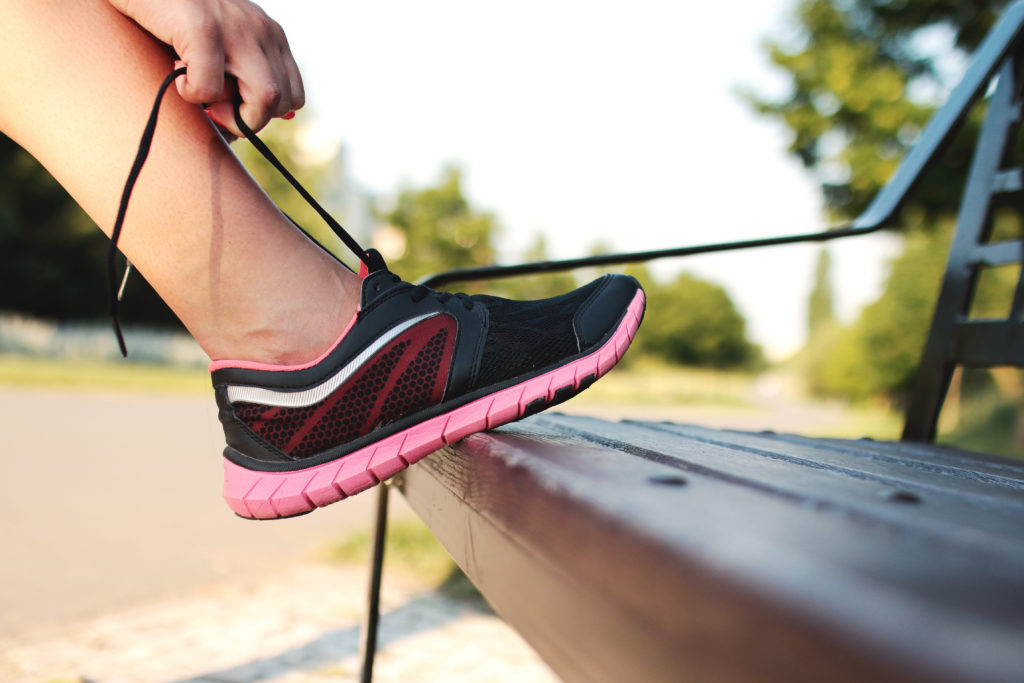
Exercise requires energy. Our bodies convert calories into a usable form of energy called ATP which feeds our muscles and allows us to do hard work! Carbohydrate that has been broken down into simple sugars is the most usable and readily available form of energy. So, for anyone that is struggling with high blood sugar readings, exercise will lower it. If you have chronic high blood glucose OR if you have a high serum glucose reading after a carb heavy meal, exercise is an excellent solution. Essentially, exercise helps use up all the excess glucose hanging around.
Many people might not be interested in a hard gym workout after a big meal, but a walk is a perfect idea! Go grab your tennis shoes and get moving. Any movement will provide a benefit and walking for just 20 minutes a day can extend your life by several years! Exercise actually makes it easier for insulin to get glucose into the cell to be used for energy, reducing the amount of glucose in your bloodstream.
This small research study showed that a 10-minute walk, 3 times per day directly after the meal was MORE effective in lowering blood glucose than a 30-minute walk each day- by 12%! While more research is needed to investigate this idea further, a short walk after your meal certainly won’t hurt!
02. Reduce Added Sugars in Your Diet
While many of us are aware of the common high sugar foods and beverages including cakes, cookies, ice cream, sodas, and candy, one study shows that over 70% of our food supply in the grocery store has added sugar! It’s everywhere! Often, it is hidden in foods and we don’t even realize it! Sadly, it is also hidden in foods that are labeled or considered “healthy” like “gluten-free” or “heart healthy” foods.
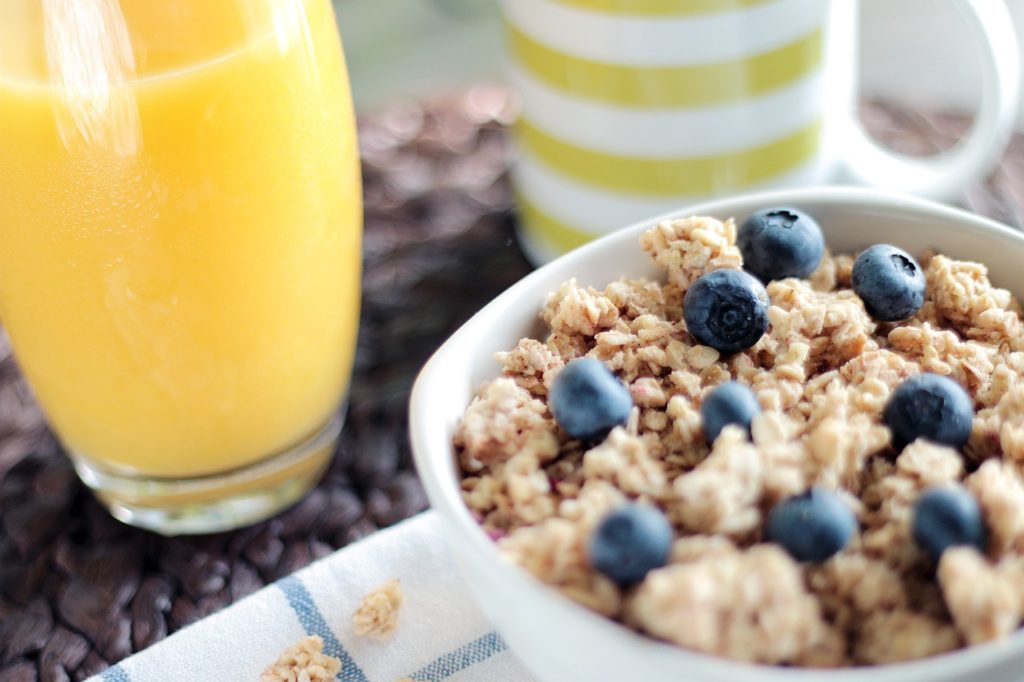
Did you know that most packets of flavored oatmeal have 3 teaspoons (1 full tablespoon!) of added sugar! What about that “healthy gluten-free granola” in your pantry? (Go check the nutrition label and ingredient list and you might be surprised!) Sugar plagues us and it isn’t going away. It is our responsibility to take action by reading nutrition labels and selecting the best options available to us. Find a full list of names for added sugar here– these are a variety of terms that could be used on a nutrition label to indicate sugar. Read carefully because it is often cleverly disguised.
To make it even easier for you to do your grocery shopping, this is a list of 15 Hidden Sources of Added Sugars AND better options you can find at a regular grocery store!
03. Pair Carbohydrate With Protein
Have you ever grabbed a banana for breakfast and taken off? Have you ever packed a big bunch of grapes for a snack? Fruit is a wonderful source of healthy carbohydrate because it is loaded with nutrients like potassium and vitamin C as well as antioxidants that help fight off forms of cancer and keep you looking (and feeling!) young. However, these carbs are broken down into sugar fairly quickly and some types of fruit can raise blood glucose rapidly.
This doesn’t mean we should avoid fruit! When you hear messages to remove an entire food group, you must question the validity of that statement. Recommendations MUST be backed by science and quality research. There are very few health conditions that require an individual to remove an entire food group and that should only be done under the guidance and supervision of your healthcare practitioner.
BUT, the key to incorporating fruit and other healthy carbohydrate foods into your diet is to pair it with protein or healthy fat. By doing this, it slows the release of glucose into your bloodstream so that you avoid the sugar spikes and lows.
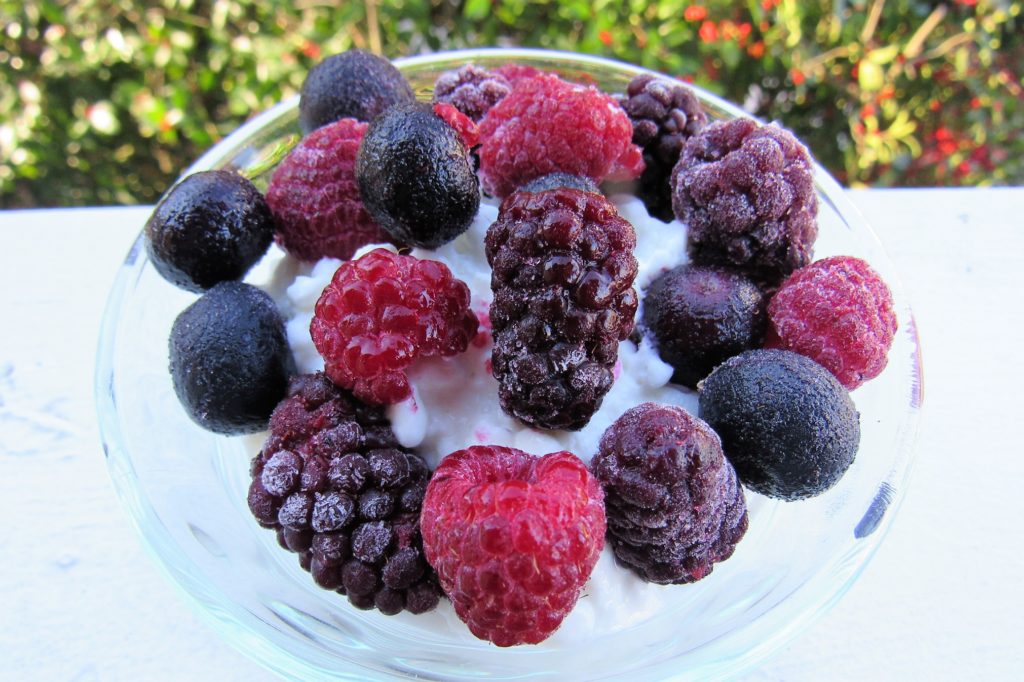
Some examples of pairing carbs with protein and healthy fat include:
SNACKS
- Low fat plain greek yogurt with ½ cup of fresh or frozen berries
- Low-fat cheese stick with 1 serving of whole grain crackers
- 1-2 tablespoons of peanut/almond butter with 1 medium apple
- ¼ cup of guacamole/avocado with 1 serving of whole grain crackers or veggie sticks
**This article has even more snack ideas!!!
MEALS
- 4-6oz salmon, ½ cup whole grain quinoa, 1.5 cups roasted broccoli, 3/4cup fruit salad
- 1 cup of cooked oatmeal with 2 tablespoons raisins, and 2 tablespoons of chopped walnuts
- Open faced sandwich with 1 slice whole grain/sprouted grain bread, 2 tablespoons hummus, 2oz lean poultry, 1sl low-fat cheese, cucumber and tomato salad with Italian dressing, ¾ cup grapes
Don’t forget about breakfast! This article shows you exactly how to quickly boost your first meal of the day with protein, even when you are rushed for time.
Grab this FREE Printable with 15 FAST SNACKS THAT WON’T LEAVE YOU HUNGRY
FREE 15 Fast Snacks that Won't Leave You Hungry

Tired of boring snacks? Want to know what to stock in your pantry and fridge to keep you fueled and satisfy cravings? Grab this yummy handout and sign up for my newsletter. Take one step today for your health!
04. Lose Weight
Weight loss improves insulin resistance- an issue for anyone with diabetes or prediabetes. This means that the insulin your body produces (or what you get from an insulin pump) can more efficiently get the glucose into your cell when you lose weight or maintain a healthy weight.
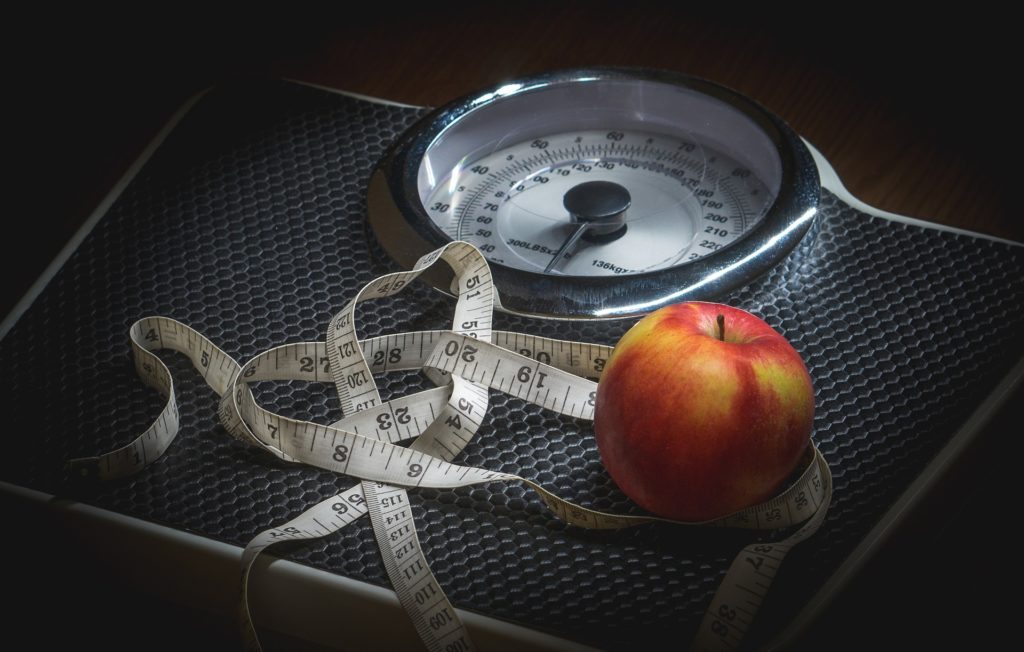
When we gain weight, the receptors on the cells become unable to get the sugar into the cell very well. This means that sugar or glucose stays out in the bloodstream for longer, doing damage to the vessels. When you lose weight, even just a little bit, you can greatly improve your body’s ability to get glucose into the cell efficiently.
This study of over 1,000 individuals at high risk for diabetes, showed that lowering weight by 5-7% using diet and exercise reduced the incidence of diabetes by over 55%!! That means a 200lb person who loses 10-14 pounds could cut their risk of diabetes in half!!
The researchers also propose that those who lose even more weight along with meeting the 150-minute weekly physical activity goals and consume less than 25% total fat could reduce risk by up to 90%!
05. Choose High Fiber Foods
Fiber is a form of carbohydrate that is not fully broken down. It has properties that slow the digestive process so that blood sugar does not rise as quickly. Research is suggesting that some types of fiber can actually improve insulin sensitivity, helping the body correctly respond to sugar in your bloodstream.
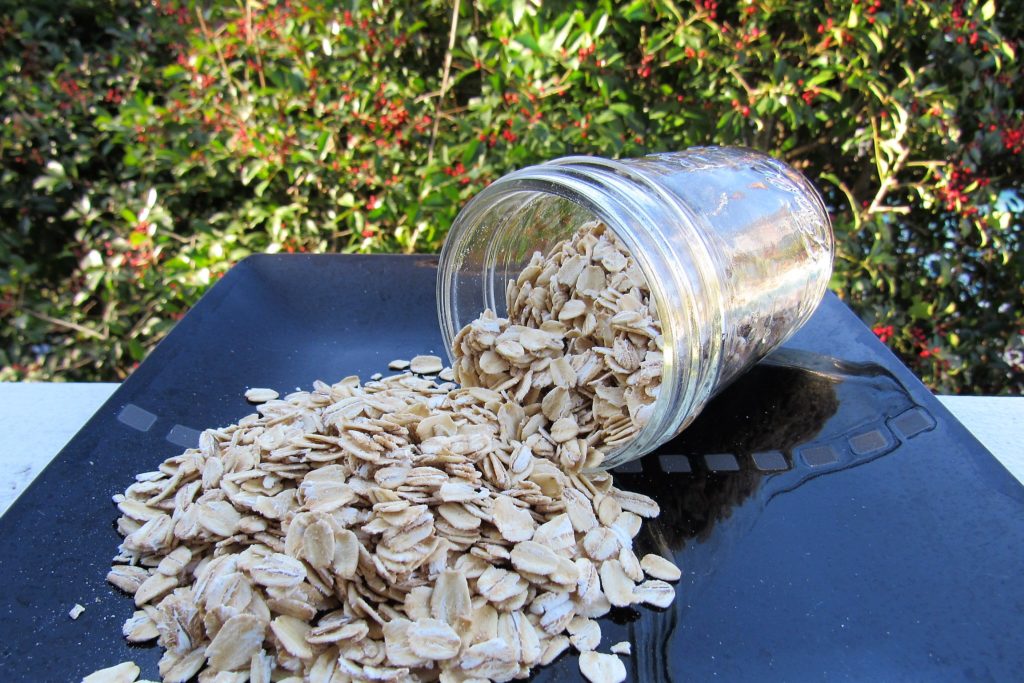
Of course, we also know that fiber helps you feel full and satisfied. The higher fiber the meal, the less likely we are to overeat. And the list of benefits goes on and on… weight control, lowers blood pressure, aids in gut health and bowel motility, helps reduce cholesterol…
Most plant-based foods are sources of fiber including:
- beans/legumes/lentils
- Whole grains
- Starchy vegetables (potatoes, sweet potatoes, winter squash, etc.)
- Non-starchy Vegetables (leafy greens, broccoli, cauliflower, zucchini, etc.)
- Fruit
- Nuts and seeds
Choosing less processed foods and incorporating more produce, beans, and nuts at your meals will naturally add fiber to your diet. There is no need to take fiber supplements when nature provides all that we need!
Read more about exactly how much fiber your body needs and where to find it in this article.
Some tasty fiber-filled recipes your whole family will love…
Apple Cinnamon Oatmeal Muffins
Edamame Quinoa Salad with Citrus Vinaigrette
Tex-Mex Slow Cooker Chicken & Black Beans
Honey Parmesan Roasted Acorn Squash
06. Eat the Protein & Vegetable at the Meal First
Could the order in which you eat your meal affect your blood glucose? Possibly! Some very small but interesting studies have shown that eating the protein and/or non-starchy vegetables first, before the carbohydrate at the meal (potatoes, bread, pasta, etc.) could actually contribute to lower blood glucose after the meal, EVEN when people ate the exact same meal. In fact, the results of 1 study showed that glucose readings were 40-50% and another study 17-37% lower when the carbohydrate was eaten last as opposed to first!
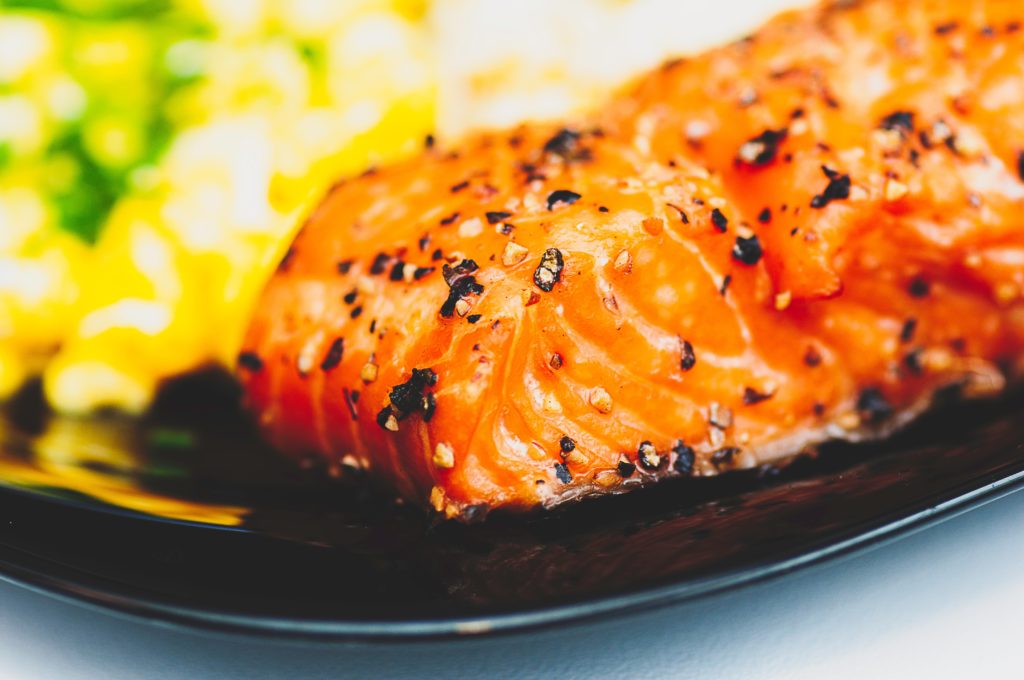
These studies are entirely too small to create national recommendations, but they are interesting nonetheless. Healthcare practitioners will continue to promote balanced meals using the plate method, focusing on quality of food and appropriate portions as opposed to the order in which we eat foods. However, individuals who are struggling with high serum glucose after meals might benefit from experimenting with this strategy and trying to eat the carbohydrate foods at the end of the meal. Another benefit to this strategy is that if you get full on the veggies and protein, you will naturally eat less carbohydrate…IF you stop when satisfied!

While there are over 100 million individuals with diabetes or prediabetes, EVERYONE needs to give attention to managing blood glucose. Your energy, vitality, and longevity depend on it!
It is important to note that medication and/or insulin can be a helpful and necessary part of blood sugar control. Never discontinue taking or change the dose of medications or insulin without consulting with your healthcare practitioner. It is also important for you to share with them changes you are making in your diet and lifestyle so that they can assess your care plan and make sure that the treatment strategies you are employing are working synergistically and appropriately.
But, relying on medication or insulin alone, will not yield optimal blood glucose readings. Only when diet and lifestyle complement the rest of your treatment plan, will you feel your best, improve quality of life and promote longevity.
ACTION STEP: Choose 1 strategy and begin to implement it this week. Give your total attention to this 1 activity. Once you begin feeling confident and comfortable with this healthy behavior, add in another one. If you are monitoring your blood glucose regularly, you will begin to notice a gradual decline towards healthy levels.
The American Diabetes Association has more information on blood glucose, diabetes, and prediabetes.
For counseling, coaching and nutrition services tailored to your individual needs, contact me to set up an appointment!
TRUTH: For God did not give us a spirit of fear, but of power, love and self-control. –2 Timothy 1:7 ESV
FREE 15 Fast Snacks that Won't Leave You Hungry

Tired of boring snacks? Want to know what to stock in your pantry and fridge to keep you fueled and satisfy cravings? Grab this yummy handout and sign up for my newsletter. Take one step today for your health!
